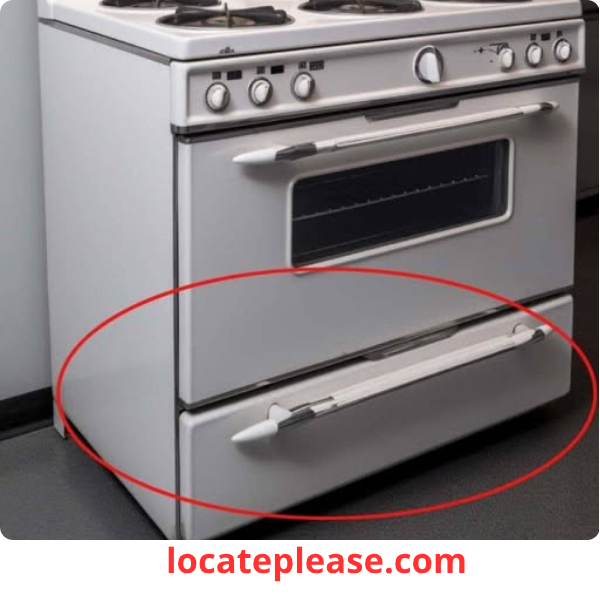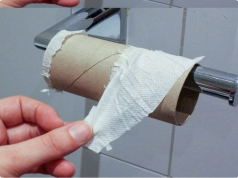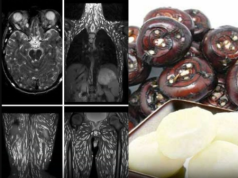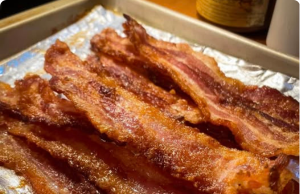If you’ve ever opened the drawer beneath your stove to stash baking sheets, oven mitts, or that rarely-used casserole dish, you’re not alone.
But here’s a kitchen revelation that might surprise you:
👉 That drawer isn’t meant for storage.
In fact, it’s a warming drawer — a built-in kitchen feature designed to keep food warm, proof dough, and even dry herbs — not to store your cookware.
Despite its common misuse, this clever appliance is a hidden gem in many kitchens, quietly enhancing meal prep and serving efficiency — if used correctly.
Let’s uncover the true purpose of the drawer under your stove — and why you might want to clear it out and start using it the way it was meant to be used.
Common Misconceptions About the Stove Drawer
For decades, home cooks have treated the drawer under the stove as a convenient storage space.
Pots, pans, cookie sheets, and even cleaning supplies often end up crammed inside.
It makes sense — it’s right there, easy to access, and out of the way.
But this widespread habit is based on a myth.
Unlike the drawer under your oven (which may be a broiler compartment), the drawer beneath many gas or electric ranges is not a storage unit — it’s a functional appliance.
And using it for storage can lead to:
- Burns — from touching hot metal items
- Fire hazards — if flammable materials (like paper or plastic) are left inside
- Damage to the drawer — from heavy or sharp objects
- Accidental activation — turning on the warming function with items inside
The True Purpose: A Warming Drawer
Yes — that drawer is designed to gently heat, not to hide your muffin tin.
A warming drawer is a temperature-controlled compartment that maintains a low, consistent heat (usually between 140°F and 200°F / 60°C–93°C) to:
- Keep cooked food warm without overcooking
- Prevent meals from drying out
- Allow for perfectly timed multi-course meals
It’s like a mini food warmer built right into your stove.
Imagine:
- Roast chicken staying juicy while you finish the gravy
- Mashed potatoes staying creamy until the last guest arrives
- Breakfast pancakes staying warm while you cook for the whole family
No more cold sides or rushed meals.
Risks of Using It for Storage
Storing items in a warming drawer isn’t just inefficient — it can be dangerous.
⚠️ Potential Risks:
- Burns — Metal pans or trays can become extremely hot
- Fire hazard — Paper towels, plastic containers, or wooden utensils can ignite if the drawer is turned on
- Overheating — Blocking airflow can cause the drawer to overheat or malfunction
- Damage to food — Forgotten leftovers or herbs can burn or create smoke
🔥 Never store flammable or heat-sensitive materials in the warming drawer.
Primary Function: Keep Food Warm — the Right Way
The warming drawer is ideal for:
- Holding dishes while finishing other parts of the meal
- Serving buffets or holiday feasts with multiple hot components
- Keeping baby bottles or plates warm (with caution)
- Reheating gently — some models have a low reheat setting
✅ Best foods to warm:
- Casseroles
- Breads and rolls
- Cooked vegetables
- Meats (covered to retain moisture)
❌ Avoid: Raw meat, dairy-heavy dishes, or anything that could spoil
Bonus Uses: More Than Just Warming
Beyond keeping food warm, your warming drawer is surprisingly versatile.
🍞 1. Proofing Dough
The warm, draft-free environment is perfect for rising bread dough.
- Set to around 85°F (30°C)
- Place dough in a covered bowl inside
- Watch it rise evenly and beautifully
No more cold kitchen corners slowing down your sourdough.
🌿 2. Drying Herbs
Dry fresh herbs slowly and evenly without a dehydrator.
- Lay herbs in a single layer
- Set to the lowest heat
- Leave for 2–4 hours until crisp
Preserves flavor and aroma better than air-drying.
🧺 3. Warming Towels or Linens (Luxury Bonus!)
Some people use it to warm towels or baby clothes — a spa-like touch for the kitchen appliance.
Safety Tips for Using Your Warming Drawer
✅ Always check the manufacturer’s manual — settings vary by brand
✅ Never leave unattended — especially with food inside
✅ Clean regularly — food spills can smoke or catch fire
✅ Use oven-safe containers only — avoid plastic or paper
✅ Label it — place a small note: “Warming Drawer – No Storage” to remind family members
How It Compares to Other Warming Methods
|
Warming Drawer
|
Gentle heat, energy-efficient, doesn’t dry food
|
Limited space, often underused
|
|
Oven
|
Larger capacity
|
Uses more energy, can overcook
|
|
Microwave
|
Fast
|
Alters texture, uneven heating
|
|
Stovetop (low heat)
|
Accessible
|
Hard to control, dries food
|
👉 The warming drawer wins for precision, efficiency, and food quality.
Final Thoughts: Make the Most of This Hidden Kitchen Tool
Now that you know the truth, it’s time to reclaim your warming drawer.
Clear out the clutter.
Read the manual.
Try it with your next meal.
Because once you’ve served a perfectly warm, restaurant-quality dinner — thanks to that little drawer — you’ll wonder how you ever cooked without it.
💡 Remember:
It’s not a storage bin.
It’s a kitchen secret — quietly working to make your meals better, one warm dish at a time.
Your stove has a superpower. It’s time to use it.










